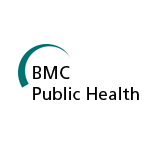
Background
Nicaragua has made progress in the reduction of the under-five mortality since 1980s. Data for the national trends indicate that this poor Central American country is on track to reach the Millennium Development Goal-4 by 2015. Despite this progress, neonatal mortality has not showed same progress. The aim of this study is to analyse trends and social differentials in neonatal and under-five mortality in a Nicaraguan community from 1970 to 2005.
Methods
Two linked community-based reproductive surveys in 1993 and 2002 followed by a health and demographic surveillance system providing information on all births and child deaths in urban and rural areas of Leon municipality, Nicaragua. A total of 49 972 live births were registered.
Results
A rapid reduction in under-five mortality was observed during the late 1970s (from 103 deaths/1000 live births) and the 1980s, followed by a gradual decline to the level of 23 deaths/1000 live births in 2005. This community is on track for the Millennium Development Goal 4 for improved child survival. However, neonatal mortality increased lately in spite of a good coverage of skilled assistance at delivery. After some years in the 1990s with a very small gap in neonatal survival between children of mothers of different educational levels this divide is increasing.
Conclusions
After the reduction of high under-five mortality that coincided with improved equity in survival in this Nicaraguan community, the current challenge is the neonatal mortality where questions of an equitable perinatal care of good quality must be addressed.